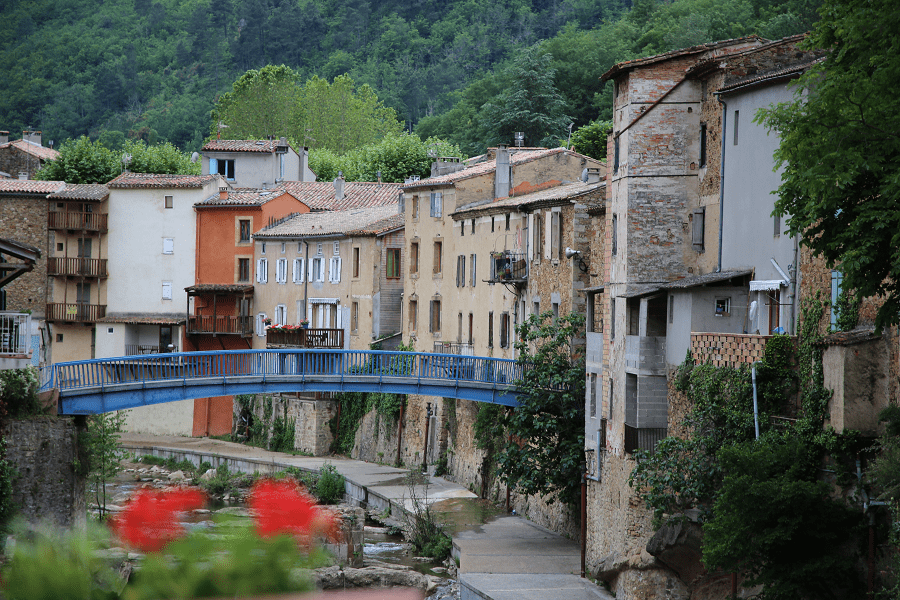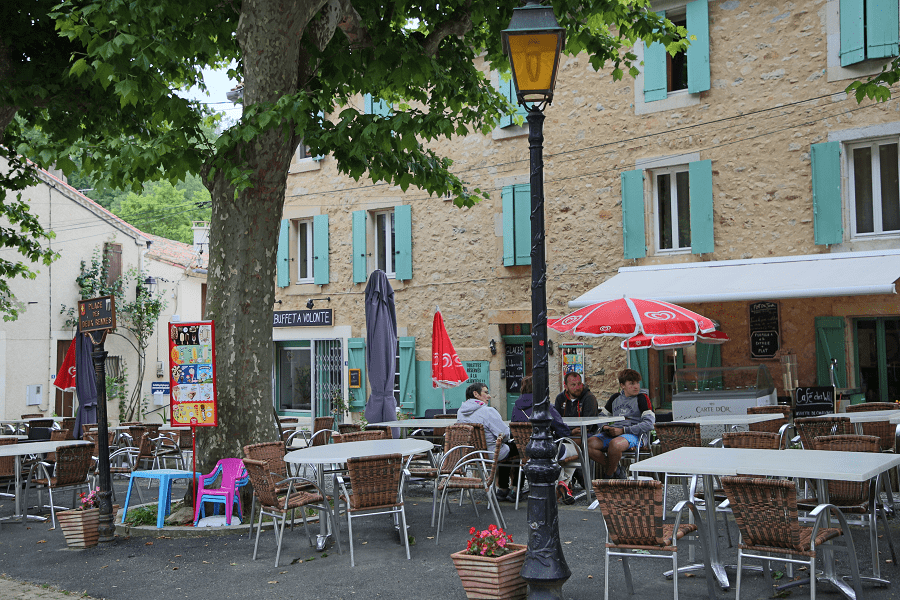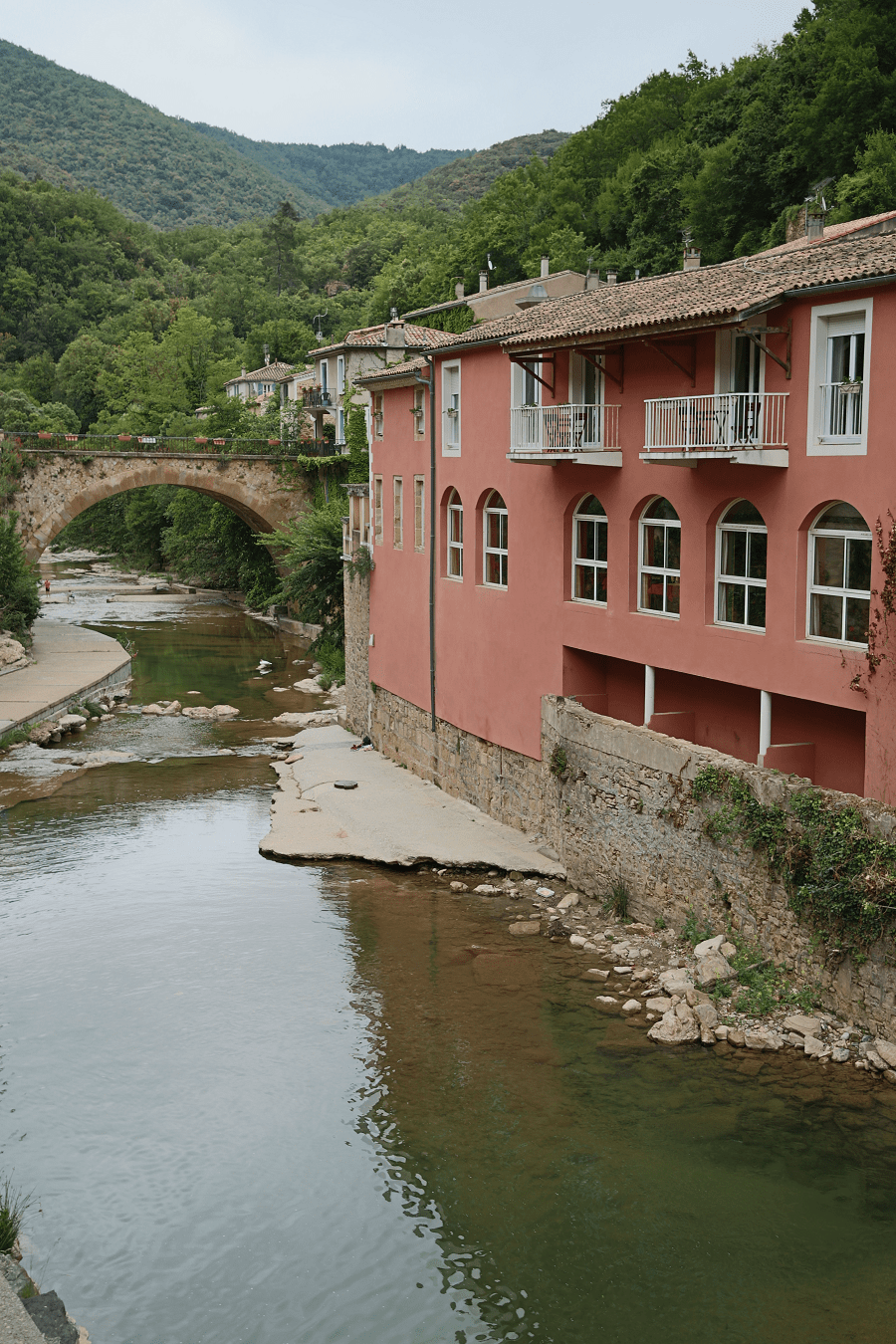Rennes-les-Bains (Rennes-les-Bains) location is in the Aude Upper Valley (Aude department) in the Occitania region (Pyrenees, France), in a quiet place at an altitude of 310 meters. The town is in 13 km from Rennes-le-Château town, 50 kilometers from Carcassonne and 25 kilometers from Limoux.
People call the town the Corbières massif gates. The Romans occupied Gaul during the II century, but their dominance was beneficial for the current Aude department – it was the Romans, who established their thermal baths, which today are famous far beyond France. The main town attraction is its thermal spas. Water approved and recommended for the treatment of rheumatological diseases and the consequences of osteoarticular injuries.
The municipal territory was attached, historically, to a former Carolingian county called Razès at the foot of the historical oppidum called “Rhedae” and which seems to correspond to the location of the central town of Rennes-le-Château, a neighboring and bordering municipality located west of Rennes-les-Bains. In addition, this territory is geographically located in the Corbières massif, more precisely in its western part, not far from the highest point of this massif, the Pic de Bugarach.
Rennes-les-Bains is the only spa dedicated to the treatment of rheumatism, located in the Aude department and whose use of water for curative virtues has been known since Antiquity.
The territory of the small village is positioned on the Méridien de Paris route, and therefore on the route de la Méridienne Verte which crosses 336 other French municipalities.
There is a company producing DVD films in the city – DEBOWSKA Film PRODUCTIONS. The company has filmed about 400 documentaries to date. They are mainly dedicated to this region’s history, as well as health issues. Some films contain in particular comments by John Blum, a Cathar historian and author of numerous books on Cathars.
Other film commentators include Dr. Jean-Jacques Charbonier, an anesthetist, resuscitator, writer and lecturer; veterinarian doctor Anna Evans, writer and author of books on intuitive communication with animals; Professor Philippe Bobola, physicist-biologist, member of the New York Academy of Sciences; Dr. Masaru Emoto, a writer specializing in water, and Marie-Emilia Vannier, lecturer and author of several books on nature.
The city also has a library that can satisfy the literary tastes of each reader: history and local literature, novels, detective stories, youth literature, as well as several books in foreign languages, and board games for fans.
Another city attraction is the engraving workshop. Its founder is Guy Fontalavie, who is called the “engraver who paints”. You can get acquainted with various engraving techniques (embossed and in-depth) in the studio and learn about unique and original works that are exhibited around the world and have been awarded several first prizes.
There are following attractions not far from the thermal springs: the Arques castle (château d’Arques), Alet Abbey (abbaye d’Alet), Rennes-le-Château town with its abbey, full of secrets about the abbot Sauniere fabulous treasures, Esperaza dinosaur museum (Espéraza), and, of course, Cathar country’s stunning castles: Peyrepertuse, Quéribus, Puilaurens, Lastours, Puivert, to say nothing about the famous Carcassonne town.
Activities
Outdoor activities and educational tourism fans will not be bored also.
Tranquility and relaxation coexist with a vibrant and agile lifestyle at Rennes-les-Bains. Sports such as tennis, minigolf, bowling, and climbing are available in the town. There are places for licensed fishing also. There are numerous hiking routes around the city, as well as horse riding or mountain biking trails.
Restaurants
There are several family and chain restaurants near the spa: Pizzeria de la place pizzeria, l’Or Loge KFE bar-restaurant, Hostellerie de Rennes-les-Bains, la Renaissance restaurants, and le Père Tranquille (translated as “Calm Dad”) brasserie.
How to get there?
Shortest distances by car:
From Paris (tolls): 8 hr 12 min (801 km) via A20
From Biarritz (tolls): 4 h 17 min (427 km) via A64
From Dax (tolls): 4 h 9 min (393 km) via A64
From Nantes (tolls): 6 h 49 min (707 km) via A10 and A62
From Saumur (tolls): 6 h 52 min (666 km) via A10 and A62
From Bordeaux (tolls): 3 h 50 min (367 km) via A62
From La Rochelle (tolls): 5 h 25 min (544 km) via A62
From Toulouse (tolls): 1 h 43 min (125 km) via A61
From Carcassonne: 55 min (49.0 km) via D118
From Monaco (tolls): 5 h 33 min (543 km) via A8 and A9
From Nice (tolls): 5 h 21 min (521 km) via A8 and A9
From Cannes (tolls): 5 h 11 min (494 km) via A8 and A9
From Saint-Tropez (tolls): 5 h 9 min (467 km) via A9
From Marseille (tolls): 3 h 48 min (364 km) via A9
From Avignon (tolls): 3 h 6 min (290 km) via A9
From Montpellier (tolls): 2 h 21 min (203 km) via A9 and A61
From Béziers (tolls): 1 h 45 min (141 km) via A61
From Narbonne (tolls): 1 h 30 min (111 km) via A61 and D118
From Perpignan: 1 h 31 min (72.4 km) via D117 and D14
From Andorra: 2 h 34 min (130 km) via D613
The closest train station is the Couiza – Montazels station, located on the Carcassonne to Rivesaltes line and in the territory of the municipality of Montazels, near Couiza, in the Aude department in the Languedoc region. This SNCF train station is located 9 km from Rennes-les Bains.
Main information
Area: 18.77 sq. km
Coordinates: 42 ° 55′11 ″ N 2 ° 19′11 ″ E
Population (city): 232
Languages: French, Occitan
Currency: Euro
Visa: Schengen
Time: Central European UTC +1
See here Pyrenees travel guide
See here France travel guide
See here Spain travel guide

















